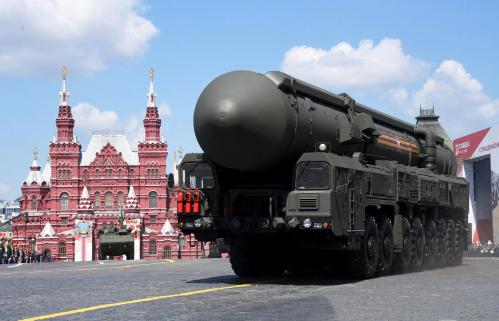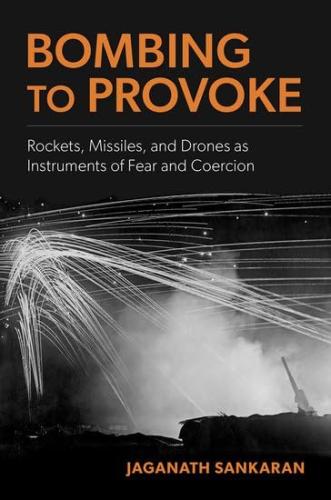Whether it will prove to be wise or foolish, the U.S.-India agreement to promote civil nuclear cooperation appears to be a done deal. It is possible that in the end India will not accept restraints that many in Washington think are important, India’s nuclear relations with Iran being one of them. The recent India-China agreement on civil nuclear cooperation will enable India to be even less obliging to the United States on issues like this. But the attitude on Capitol Hill has been made crystal clear by the Senate’s 85-12 vote in favor. Congress is ready to amend the U.S. Atomic Energy Act of 1954 to make a special exception for India, a state that adamantly refuses to accept the nonproliferation treaty and has no intention of being America’s counterweight to China. American firms will be able to sell civil nuclear technology and equipment to India. India, in turn, has agreed to accept U.N. inspections in some of its civil nuclear facilities. Its nuclear weapons installations will be off-limits.
The Bush administration has argued that this deal will strengthen the nonproliferation regime, in part because U.N. inspectors will have access to facilities in India that were closed to them until now. The Senate accepted this argument. But the reality is that the nuclear police have been given a new precinct to patrol while the law they are supposed to enforce is being rescinded. Ratification of the U.S.-India deal places squarely on the table a fact that Washington has not been willing to face: a new contract is needed between the nuclear haves and have-nots. The old one is not working.
For nearly forty years the nuclear nonproliferation treaty has helped to slow progress toward a nuclear-armed world. Today, more than 60 years after the world’s first and only use of nuclear weapons in war, fewer than ten nations have nuclear arsenals. Several nations have given up nuclear weapons or abandoned weapons programs. Even the nuclear challenges of Iran and North Korea are portrayed as defying the collective will of the international community.
How could a system that has been so successful be seen as a failure? Brazilian Ambassador Sergio de Queiroz Duarte, the president of the 2005 international conference that reviewed the Treaty, reported that several nations “came out of the Conference unconvinced that the Treaty can still provide reasonable assurance that proliferation has been checked and that progress in nuclear disarmament can be achieved.” The writing on the wall is there, unmistakably, and the U.S.-India deal just makes it clearer. There are no negotiations or even discussions about nuclear disarmament. The need for new weapons designs and threats to use nuclear weapons in less than all-out war are being discussed in Washington, and perhaps elsewhere. North Korea has joined India, Pakistan, and Israel as possessors of nuclear weapons. If Iran succeeds in acquiring nuclear weapons there will be as many nuclear-weapons states outside the nuclear nonproliferation treaty as there are in it.
The nuclear nonproliferation treaty is being undercut by governments that are reluctant to restrain their own actions. Iran says that the Treaty permits it to enrich uranium and separate plutonium. North Korea built up its nuclear infrastructure while complying with the Treaty. The United States says that it has reduced its nuclear arsenal and the onus is on other countries to live up to the bargain struck by the Treaty. The cumulative effect is that the Treaty has little effect on what governments actually do.
Where is the world headed? One indicator of what the Bush administration fears the future may hold is the energy it has devoted to defensive strategies, such as the interdiction of illicit shipments of nuclear materials. These worries are certainly justified. The A. Q. Khan nuclear smuggling ring, based in Pakistan and connected with an intercontinental network, was a wake-up call. The administration is right to say that the international community urgently needs more reliable controls over nuclear materials and strengthened efforts to detect and interdict illicit shipments of these materials. It is wrong to assume that a steady increase in the number of states — even if they are mostly “good guys” — that can build and deploy nuclear bombs will not outstrip the capacity of any system to plug leaks and intercept bombs. Like the levees in New Orleans, a rising tide of nuclear-capable nations, some quite responsible, others less so, in the end will overwhelm any defensive barrier. In the age of globalization, borders are simply too porous to indefinitely hold back determined efforts to smuggle nuclear weapons.
An offensive strategy is needed, one that will reverse the growing pressures on nations to acquire nuclear weapons and roll back the numbers of nuclear weapons in the world.
The missing link is the nuclear nonproliferation treaty itself. It is possible to listen to policy pronouncements by senior administration officials about the administration’s fight against nuclear proliferation without ever hearing the Treaty mentioned. Why is the administration not putting as much muscle into an effort to restore confidence in that Treaty as it is in creating new interdiction tools? It could be that the administration believes the fight against nuclear proliferation already has been lost. But the answer also lies in the administration’s ideological mind-set.
President Bush’s approach to nuclear weapons is based on three premises that have permeated his administration’s actions:
- Nuclear weapons are not the fundamental problem; they become a major security problem when they get into the hands of rogue states or terrorist groups.
- Global norms have their place, but the most effective means of countering proliferation are through coalitions of democracies, using military force if necessary.
- Restraints on the ability of the United States and other democratic nations to maintain nuclear forces that they alone deem necessary for their security should be avoided.
This thinking has freed the administration to focus intensely on countries that pose a proliferation threat, like Iran and North Korea, but successes are hard to find. Selectivity in the application of nonproliferation norms and policies actually encourages proliferation. It drives potential proliferators to acquire nuclear weapons, either to deter the United States, as in the cases of North Korea and Iran, or because there are no sanctions against proliferation, in the cases of friends of the United States, like India. And there is also no presumption that the nuclear weapon states have any obligation to scale back their nuclear weapons to levels lower than they have unilaterally determined they need. That was the logic of the Treaty of Moscow, signed by Presidents Putin and Bush in 2002.
The current drift towards a world of 20 or 30 nuclear-armed states will continue unless a new contract is concluded to replace two articles in the Nonproliferation Treaty. These are the undertakings by the nuclear-weapons states to negotiate on nuclear disarmament, and the right enjoyed by any country to a civil nuclear power program. These articles have been neglected or abused by a number of countries. There is no use in pretending that the nuclear nonproliferation treaty can still be an effective barrier against the creeping menace of nuclear terrorism unless a new contract replaces those two provisions.
Concessions are needed from both sides, those that have nuclear weapons and those who are being asked to refrain from acquiring them. First, the new contract should include an undertaking to assist civil nuclear power programs by promoting regional multilateral fuel production facilities or by establishing a nuclear fuel bank under the control of the International Atomic Energy Agency, as Warren Buffet has urged. Much has been said about this latter point since President Eisenhower proposed it in 1953, including by President Bush, but nothing has been done. Nothing will be done unless this idea becomes part of a new nonproliferation contract.
The second part of the new contract would be an obligation on the part of nuclear weapons-capable states to shrink nuclear arsenals globally. The Nonproliferation Treaty’s provision on this point now lacks any credibility. Is there room for further cuts in nuclear weapons after the 2002 Bush-Putin Treaty of Moscow? That treaty stipulates that Russia and the United States each can have as many as 2200 operationally deployed nuclear warheads six years from now, in 2012. There is no limit on how many warheads can be held in reserve, in what the Administration calls a Responsive Force. These reserve weapons can be used to reconstitute the operationally deployed force. Given the state of relations between the world’s two largest nuclear weapons powers today, there is no real reason why Russia and the United States cannot place more reliance on the Responsive Force, and less on operationally deployed forces. Even zero operationally deployed nuclear warheads is not an unreasonable goal.
India and America, their new strategic partnership apparently sealed by a deal to cooperate in civil nuclear programs, are the obvious candidates to champion a new nonproliferation contract. Not so long ago, India’s leaders and America’s leaders were in the forefront of those who saw nuclear weapons as immoral. Today, their own self-interest in preventing a nuclear disaster should encourage these two countries and others to spearhead an effort to negotiate a new contract before it is too late to stave off the nuclear nightmare that is becoming increasingly likely.


Commentary
Op-edNuclear Nonproliferation’s Missing Link
December 1, 2006